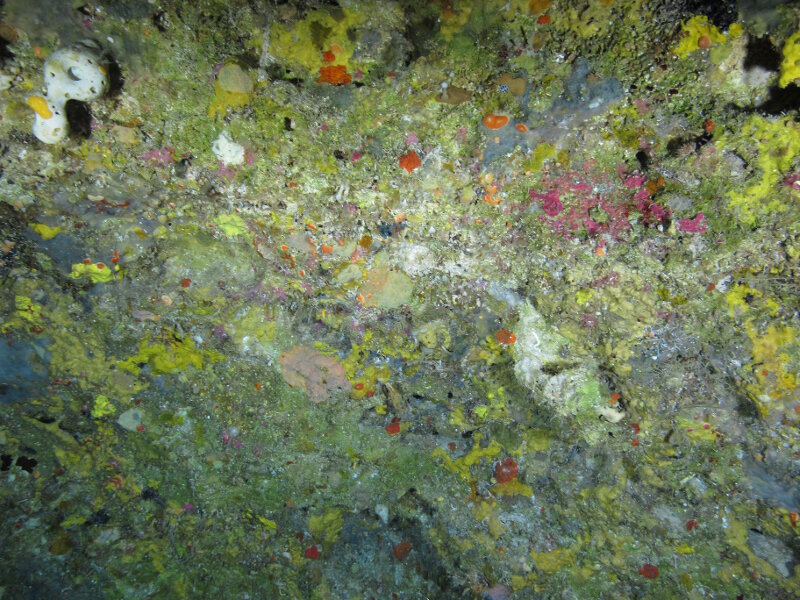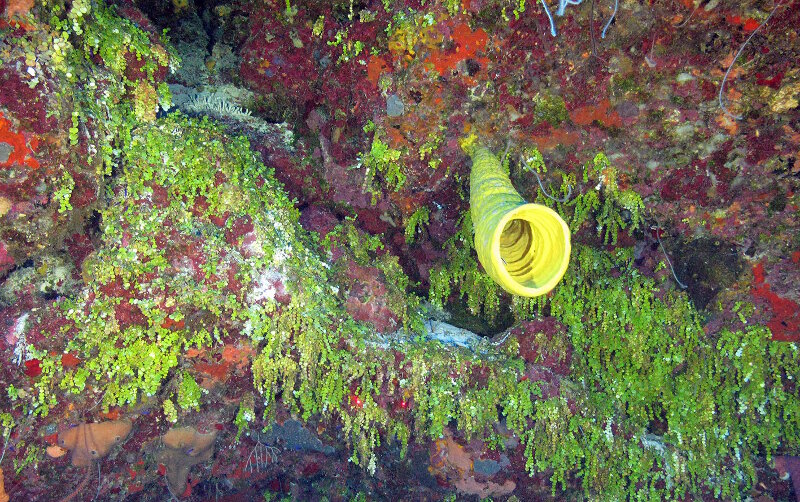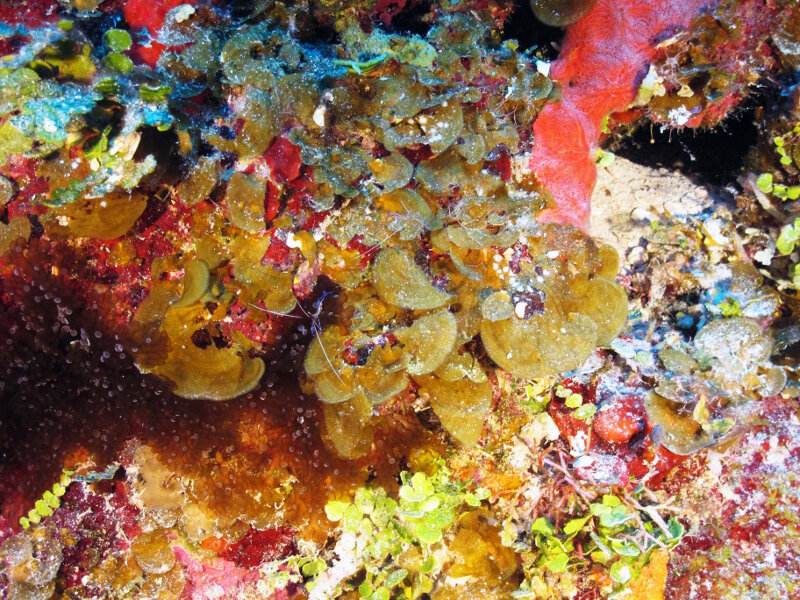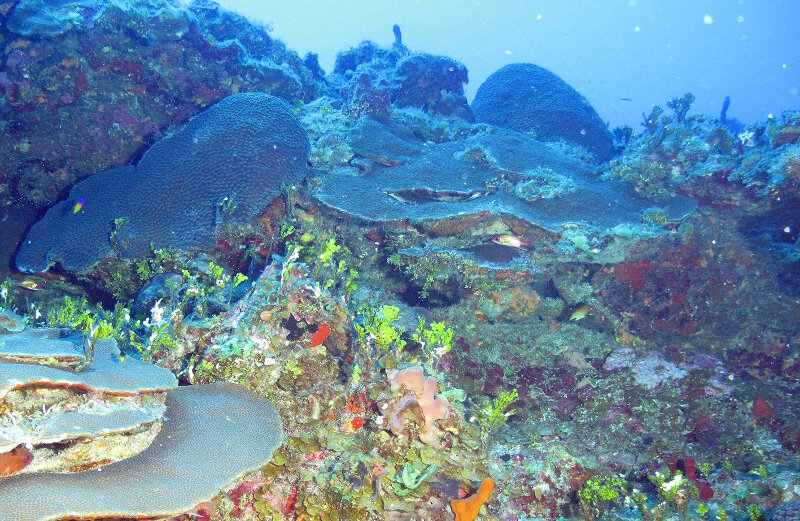
By Beatriz Martínez-Daranas, Professor & Researcher - Center of Marine Research, University of Havana (CIM-UH)
June 3, 2017

The deepest photosynthetic macroscopic organisms in the mesophotic reefs of Cuba are crustose coralline algae (CCA). CCA belong to the phylum Rhodophyta (red algae) and look like patches of pink "paint" on the reef. To make species identifications, we need to collect them for microscopic and molecular analyses. Image courtesy of Cuba’s Twilight Zone Reefs and Their Regional Connectivity. Download larger image (jpg, 1.1 MB).
Seaweeds are among the most ancient organisms on Earth. When we are looking at the display during our remotely operated vehicle (ROV) dives, we are anxious to discover what is the maximum depth where seaweeds can live. We can imagine how these intriguing organisms evolved for living at such depths with very low levels or light.

Halimeda is a calcified, segmented green alga (Phylum Chlorophyta) that is a very important member of mesophotic reef communities. H. copiosa is the most widespread and abundant species of Halimeda on Cuban mesophotic reefs. Image courtesy of Cuba’s Twilight Zone Reefs and Their Regional Connectivity. Download larger version (jpg, 699 KB).
So far in our diving on Cuban mesophotic reefs, we have found the seaweeds live to depths of about 170 meters (at the lower mesophotic zone). The deepest algae are sparse Rhodophyta encrusting forms, but at about 80-100 meters, they become denser and some mysterious crustose green algae appear. In the light of the ROV, the wall seems an abstract painting due to seaweeds and sponges.

After Halimeda, Lobophora, a brown alga (Phylum Ochrophyta), is the most abundant seaweed on Cuban mesophotic reefs. Once thought to be only one species (L. variegata) in the Caribbean, recent research has revealed multiple species, which we will distinguish following analysis of the samples we are taking. Image courtesy of Cuba’s Twilight Zone Reefs and Their Regional Connectivity. Download larger version (jpg, 2.3 MB).
From 100 to 50 meters, the green algae Halimeda copiosa appears, increasing its abundance in the middle mesophotic zone where there is space enough to compete with sponges and other invertebrates. At the top of the wall or on some rocky ledges, this species can form “curtains of the stage,” behind which little fishes enter to perform.

Primary producers (both corals, with their zooxanthellae algal symbionts, and macroalgae, many of which are calcified, as are the corals) dominant the benthic community near the top of “the wall” on Cuban reefs. Image courtesy of Cuba’s Twilight Zone Reefs and Their Regional Connectivity. Download larger version (jpg, 577 KB).
Where the reef flattens out into spur and groove zones, in the upper mesophotic zone (40-30 meters), the diversity of organisms explodes and the same happens to macroalgae. Other species of Halimeda, Dictyota, and other genera appear, but the species that covers most of the stage is the brown Lobophora sp. Perhaps, it could be a different species than what we find in shallower waters.
In Cuban waters, more than 560 species of macroalgae have been found so far, 88 percent of them between the intertidal zone to 15 meters deep. This cruise is a great opportunity to discover new species and to learn their depth distributions.
Another interesting finding was that, many times, we observed Thalassia testudinum blades lying on the bottom, at 170 meters deep and more. This observation demonstrates how interconnected marine ecosystems are.